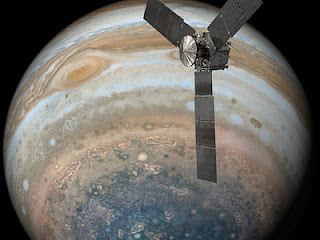Geology
Geology
is an Earth science concerned with the solid Earth, the rocks of which it is composed, and the processes by which they change over time. Geology can also include the study of the solid features of any terrestrial planet or natural satellite such as Mars or the Moon.
Geology is the study of the nonliving things that the Earth is made of. Geology is the study of rocks in the Earth's crust. People who study geology are called geologists.
Traditionally, geology has been divided into two main subdivisions: physical geology and historical geology. Physical geology is the study of the solid Earth and the processes that change the physical landscape of the planet.
synonyms, antonyms, idiomatic expressions, and related words for geology, like: evolution, earth-science, geoscience, paleontology, sedimentology, geomorphology, mineralogy, geochemistry, geophysics, geological and petrology.
Geochemistry
Geochemistry is the study of the chemical processes which form and shape the Earth. It includes the study of the cycles of matter and energy which transport the Earth’s chemical components and the interaction of these cycles with the hydrosphere and the atmosphere.
It is a subfield of inorganic chemistry, which is concerned with the properties of all the elements in the periodic table and their compounds. Inorganic chemistry investigates the characteristics of substances that are not organic, such as nonliving matter and minerals found in the Earth’s crust.
Oceanography
Oceanography is the study of the composition and motion of the water column and the processes which are responsible for that motion. The principal oceanographic processes influencing continental shelf waters include waves and tides as well as wind-driven and other oceanic currents. Understanding the oceanography of shelf waters and the influence this has on seabed dynamics, contributes to a wide range of activities such as the following:
assessment of offshore petroleum production infrastructure
seabed mapping and characterisation for environmental management
marine biodiversity surrogacy research
assessment of renewable energy potential
Paleontology
Paleontologists are interested in fossils and how ancient organisms lived. Paleontology is the study of fossils and what they reveal about the history of our planet. In marine environments, microfossils collected within layers of sediment cores provide a rich source of information about the environmental history of an area.
Sedimentology
Sedimentology is the study of sediment grains in marine and other deposits, with a focus on physical properties and the processes which form a deposit. Deposition is a geological process where geological material is added to a landform. Key physical properties of interest include:
the size and shape of sediment grains
the degree of sorting of a deposit
the composition of grains within a deposit
sedimentary structures.
These properties together provide a record of the mechanisms active during sediment transportation and deposition which allows the interpretation of the environmental conditions that produced a sediment deposit, either in modern settings or in the geological record.
Additional Branches
Benthic Ecology. Benthic ecology is the study of living things on the seafloor and how they interact with their environment.
Biostratigraphy. Biostratigraphy is the branch of stratigraphy that uses fossils to establish relative ages of rock and correlate successions of sedimentary rocks within and between depositional basins.
Geochronology. Geochronology is a discipline of geoscience which measures the age of earth materials and provides the temporal framework in which other geoscience data can be interpreted in the context of Earth history.
Geophysics. Information relating to various techniques including: airborne electromagnetics, gravity, magnetics, magnetotellurics, radiometrics, rock properties and seismic.
Marine Geochemistry. Marine geochemistry is the science used to help develop an understanding of the composition of coastal and marine water and sediments.
Marine Geophysics. Marine geophysics is a scientific discipline which uses the quantitative observation of physical properties to understand the seafloor and sub-seafloor geology.
Marine Surveying. The survey environment varies from oceanographic studies in the water column to investigating sediment and geochemical processes on the seafloor and imaging the sub-seafloor rocks. Surveys are carried over Australia’s entire marine jurisdiction, from coastal estuaries and bays, across the continental shelf and slope, to the deep abyssal plains.
Spectral Geology. Spectral geology is the measurement and analysis of portions of the electromagnetic spectrum to identify spectrally distinct and physically significant features of different rock types and surface materials, their mineralogy and their alteration signatures.




Comments
Post a Comment